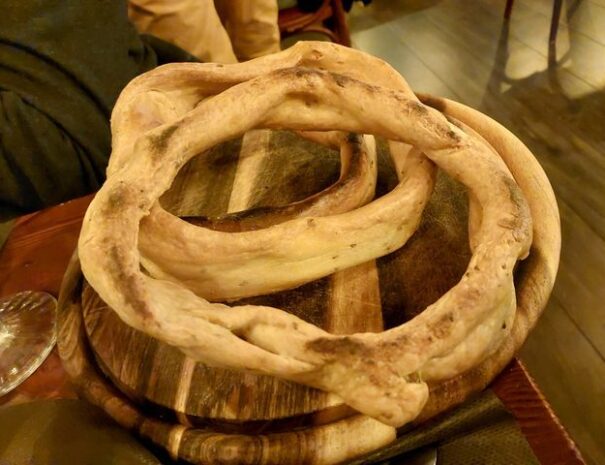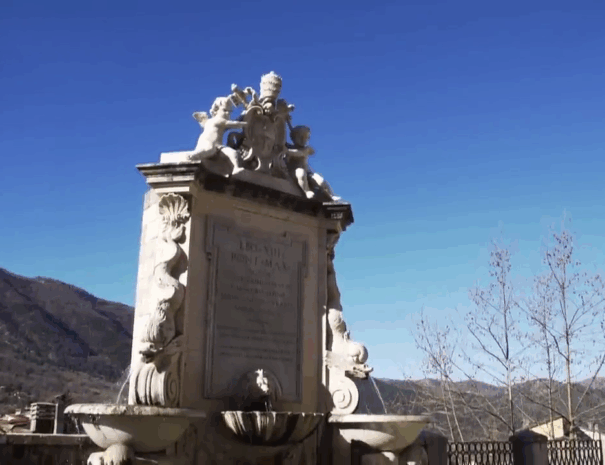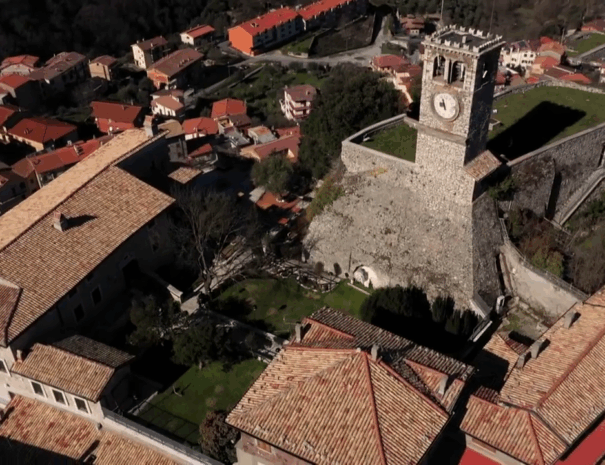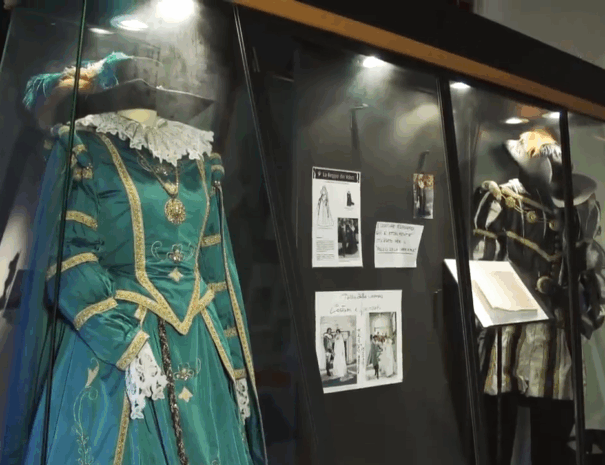Carpineto Romano: terra di sapori, cultura e tradizioni
Carpineto Romano è molto più di un borgo arroccato tra i Monti Lepini.
È una terra di sapori autentici, storia profonda, tradizioni vive e identità forte.
È la città delle castagne, raccolte nei castagneti che in autunno si tingono di oro e fuoco.
È la città delle olive, che danno vita a un olio dal profumo intenso e dal gusto sincero.
È la città delle ciambelle, dolci e fragranti, preparate ancora oggi secondo ricette antiche tramandate di generazione in generazione.
Ma Carpineto è anche la città di “Jo Papa Nostro”, Papa Leone XIII, nato qui nel 1810 e ricordato con profondo affetto da tutta la comunità. Il suo legame con il paese è ancora vivo nelle strade, nei racconti e nel Museo a lui dedicato, che ne custodisce memoria e eredità.
Camminando per il centro storico, tra vicoli di pietra e panorami mozzafiato, si incontrano numerose chiese, veri scrigni di arte e devozione popolare, che raccontano secoli di storia locale.
E poi c’è il cuore pulsante dell’estate carpinetana: il Pallio della Carriera. Una rievocazione storica unica, che trasforma Carpineto in un tuffo nel Seicento tra sbandieratori, cortei in costume, giochi popolari e corse a cavallo. Un evento che unisce passato e presente, coinvolgendo tutta la cittadinanza in un’atmosfera di festa.
Al nostro B&B non offriamo solo ospitalità, ma l’occasione di vivere Carpineto da dentro — come uno del posto, tra sapori, storie e tradizioni che sanno ancora parlare al cuore.









Richard McClintock, a Latin scholar from Hampden-Sydney College, is credited with discovering the source behind the ubiquitous filler text. In seeing a sample of lorem ipsum, his interest was piqued by consectetur—a genuine, albeit rare, Latin word. Consulting a Latin dictionary led McClintock to a passage from De Finibus Bonorum et Malorum (“On the Extremes of Good and Evil”), a first-century B.C. text from the Roman philosopher Cicero.
It’s difficult to find examples of lorem ipsum in use before Letraset made it popular as a dummy text in the 1960s, although McClintock says he remembers coming across the lorem ipsum passage in a book of old metal type samples. So far he hasn’t relocated where he once saw the passage, but the popularity of Cicero in the 15th century supports the theory that the filler text has been used for centuries.
And anyways, as Cecil Adams reasoned, “[Do you really] think graphic arts supply houses were hiring classics scholars in the 1960s?” Perhaps. But it seems reasonable to imagine that there was a version in use far before the age of Letraset.
And anyways, as Cecil Adams reasoned, “[Do you really] think graphic arts supply houses were hiring classics scholars in the 1960s?” Perhaps. But it seems reasonable to imagine that there was a version in use far before the age of Letraset.
Richard McClintock, a Latin scholar from Hampden-Sydney College, is credited with discovering the source behind the ubiquitous filler text. In seeing a sample of lorem ipsum, his interest was piqued by consectetur—a genuine, albeit rare, Latin word. Consulting a Latin dictionary led McClintock to a passage from De Finibus Bonorum et Malorum (“On the Extremes of Good and Evil”), a first-century B.C. text from the Roman philosopher Cicero.
It’s difficult to find examples of lorem ipsum in use before Letraset made it popular as a dummy text in the 1960s, although McClintock says he remembers coming across the lorem ipsum passage in a book of old metal type samples. So far he hasn’t relocated where he once saw the passage, but the popularity of Cicero in the 15th century supports the theory that the filler text has been used for centuries.




